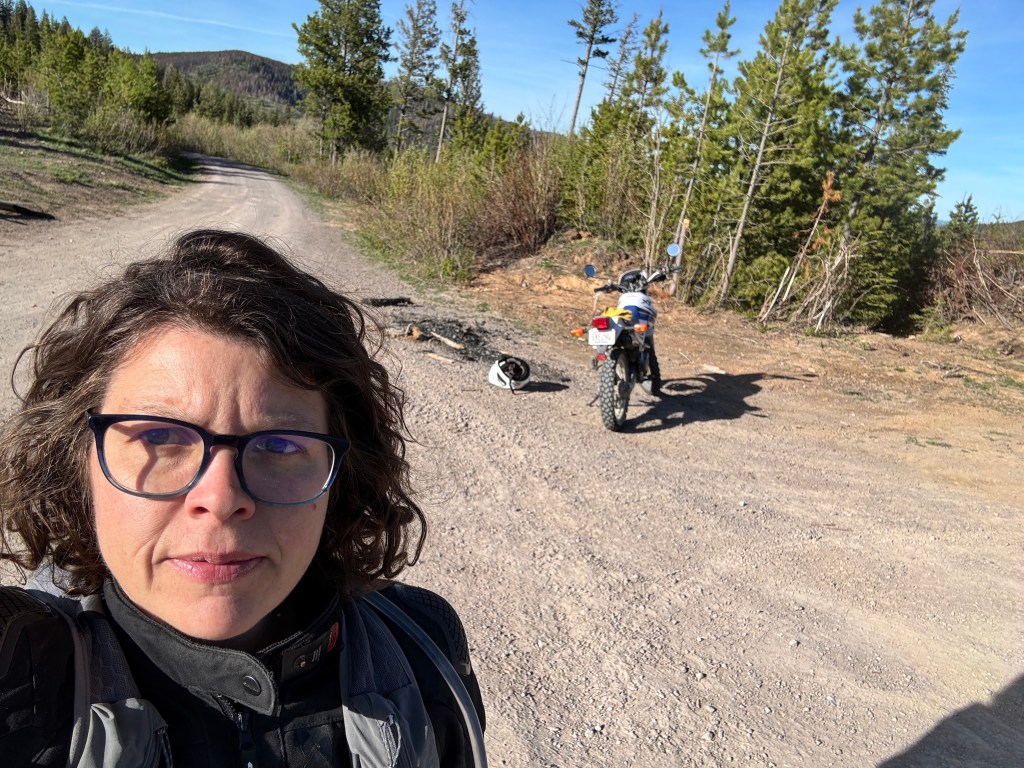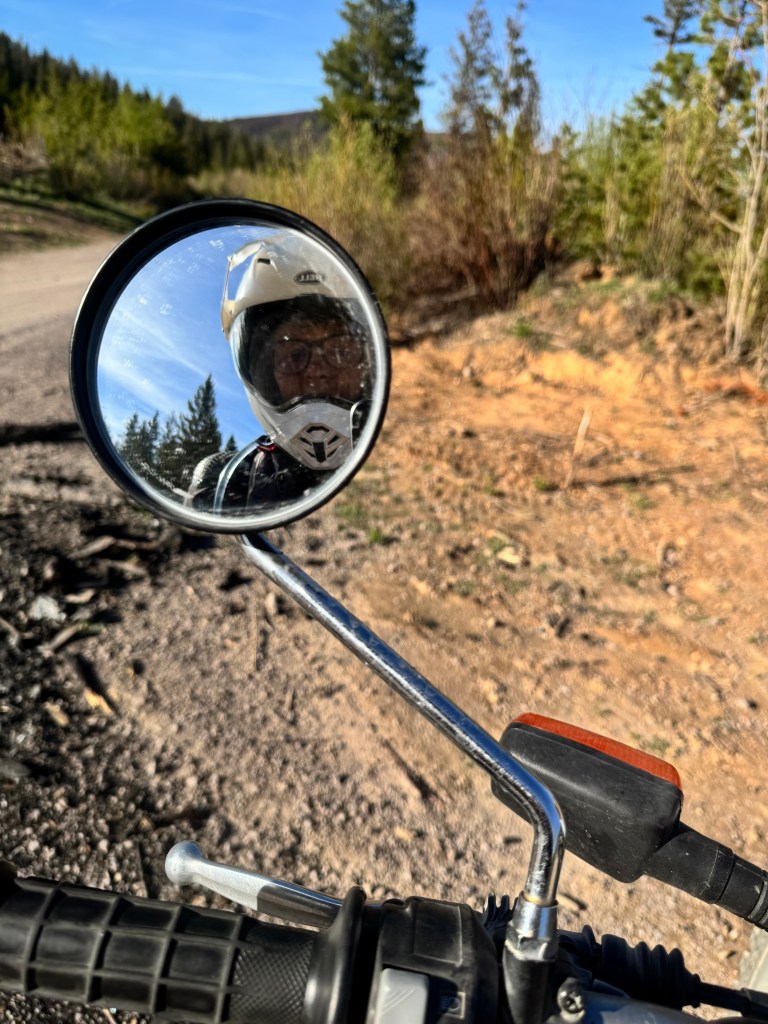Keeping the Wheels Beneath
- Carolyne Whelan

- May 29
- 5 min read
Updated: Jul 8
In addition to being a writing coach for Western Montana students and helping Free Cycles with their fundraising, I've been volunteering with MT Alphas, a women's+ cycling team and collective, offering feedback on how to be more inclusive to all women and co-leading queer gravel and mountain bike rides, and coming up I'll be the moto lead-out for the 80-mile gravel race Dusty Bandita, which I "raced" last year. I don't consider myself a very good dirt biker, and truth be told I like pedal bikes more, but a) I missed the sign up for the actual race, and b) I like the challenge of getting my skills and confidence up in time to ride the course at a measured and helpful speed, take care of any downed trees, and scare the bears.
My dual-sport had been out of use since last fall when I crashed and apparently broke a few things, but my partner finally got it fixed up for me (no wrenching on it this time for me as I had too many deadlines piling up), so it's been a bit of a scramble to get miles under me to get comfortable once again with riding.
I have some memory problems, cognitive issues I like to blame on concussions, and things like getting back on the bike highlight these problems, complications, and insecurities. Will I remember how to ride? Will I know how to shift? Will I crash immediately and not only humiliate myself but also ruin the race for everyone because the bears don't get scared and the lead riders get eaten and my own riding season is canceled due to riding my bike off a cliff?

***
I've been generally putting myself out there more this spring to have more fun and get back into things I've let fall to the wayside. Last week I took a hockey clinic to wrap up my spring season that's been 26 years coming. There was no description on the clinic on who it was designed for or what we'd learn. I'd only been playing with women and this would be my first time playing with boys since I was a kid. I got on the ice and saw my friend Russell, a fantastic player, lined up for drills. While it was open to everyone, it turned out to be attended by mainly beginners, adults bravely taking up hockey in their 40s and 50s, and Russell and I who have taken time off the ice. Feeling skills come back and practicing drills that awaken the tiny lions in my body that roar is incredible. Since winter, I went from unable to turn around to skating backwards without picking my feet up to backward figure 8s, all because of the incentive to up my own ante and see what I might remember. The fear of falling is still present, because I am 43 and have the chronic aches to show for it, but not jarring.
When it got to practicing passing and shots, I was excited and nervous because I feel like my shots are still very weak. The assistant coach grabbed me after one drill and gave me a tip for how to better position my weight to leverage the puck and maintain control. Of course, I thought, I should know that. At my next turn, I got lower and leveraged the puck with my momentum behind the stick, almost like hockey's version of an uppercut. "Easy peasy!" the coach said when the puck clinked the back of the net. Sometimes we need others to be our memories.
***
I took myself on a solo ride the other day to get used to riding alone, navigating and making decisions on the fly, and keeping a pace that was pressurized by the sunset. I rode up the same climb where I got lost last fall, but this time when I reached the saddle I still had some daylight on my side and a more clear path of where I should be headed. Amazingly, just like I was able to make it through the Expo and have lots of stories to write, or get back into playing hockey as if I hadn't taken 26 years off, I have been having a great time riding and it all came back to me — just like riding a (moto)bike. The descent down the other side of the mountain was more technical than I expected and much more technical than the ride I will be leading out, with lots of S turns on rocky terrain with a good deal of exposure. I fishtailed a few times, peeled out of turns, and in a panic I braked when I should have let the bike do its thing. I tightened up when I should have leaned and looked where I wanted to go. but I made it down, I didn't crash, and I had fun.
When I got to the other side of the mountain, in Clinton, and once again had cell coverage, I texted Alex. "I'm nervous about running out of daylight," I lamented. "Well, get moving! You can make it." So I did. The ride on the other side of the loop, back up the mountain, felt remarkably easy. The sun was starting to set and was at times blinding, but I was able to keep up speed and motor through the ruts, potholes, and washboards. Back over the saddle and headed home, I was once more on the road I know so well, usually riding up and down this one very long section. I remembered: look, don't brake. Lean, don't stiffen.

I'd spent the night before watching Chris Birch videos from his Say No to Slow, and now that I had conquered that rather technical mountain descent, this more familiar (if more technical) descent felt like a home stretch even though I had another 30+ miles to go. Whenever my instincts called to shift down or brake, I loosened my hands, took a breath, and use my bode counterweight as I turned my head to where I wanted to go.
It felt a lot like when I finally learned how to safely mountain bike rather than just riding my bike into stuff, terrified and hoping for the best. Physics is doing a lot of work.
Back home, I parked my bike and came in the house still covered in dust. I grabbed a cider from the fridge and plopped myself down in the living room to kick off my boots.
"Still like riding? Don't regret it?"
"Hell yeah," I said, cracking the can and a smile in one swipe from the heart. "Easy peasy."




Comments